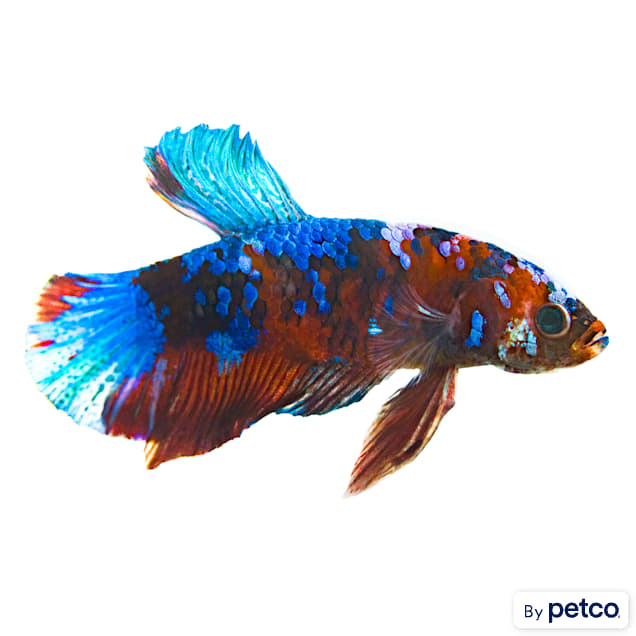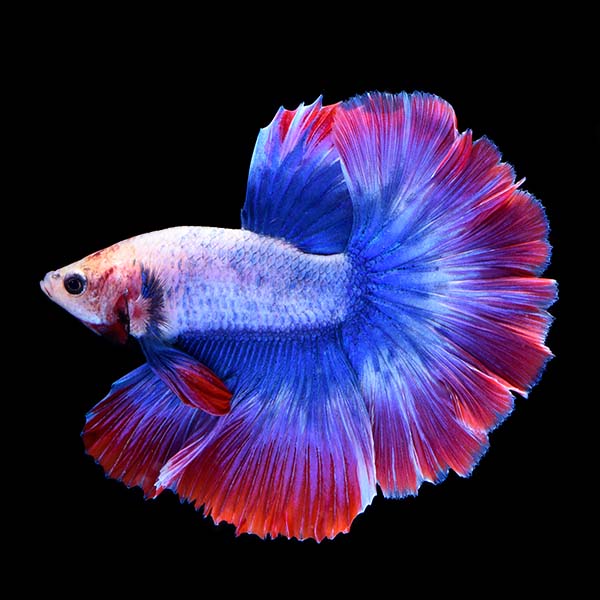Exactly how to Pick the Right Betta Fish for Your Aquarium
Exactly how to Pick the Right Betta Fish for Your Aquarium
Blog Article
All Concerning Betta Fish: Understanding Their Unique Demands, Behavior, and the most effective Practices for Optimal Care
Recognizing the distinct demands and behaviors of Betta fish is necessary for any type of aquarist aiming to offer optimum care. These fascinating animals, indigenous to the warm waters of Southeast Asia, display unique territorial propensities and require certain ecological problems to flourish. From selecting the right container size to recognizing possible health problems, numerous variables substantially affect their health. As we explore these elements better, the ramifications for both amateur and seasoned fish keepers come to be increasingly evident, increasing questions about exactly how finest to accommodate these exceptional fish in our homes.
Betta Fish Introduction
Although commonly admired for their vivid shades and moving fins, Betta fish, clinically understood as Betta splendens, are complicated creatures that require details like flourish. Originating from Southeast Asia, these freshwater fish are known for their territorial nature and unique actions. Betta fish display sexual dimorphism, with males presenting a lot more vibrant colors and longer fins than ladies.
Their hostile tendencies, particularly amongst males, necessitate mindful consideration when housing them. Bettas are usually maintained in single-specimen containers to stop territorial disputes. They can exist together quietly with certain suitable varieties in larger community storage tanks, offered the environment meets their needs.

To ensure optimal care, aquarists should recognize their distinct behavioral qualities, nutritional requirements, and environment demands. betta fish. With appropriate interest, Betta fish can exhibit their dynamic characters and thrive in a well-kept fish tank setting
Natural Habitat and Environment
Betta fish prosper in a varied series of natural habitats, largely discovered in the shallow waters of Southeast Asia, including rice paddies, swamps, and slow-moving streams. These settings are characterized by cozy temperature levels, usually in between 75 ° F and 82 ° F(24 ° C and 28 ° C ), and a pH level varying from 6.5 to 7.5, which is excellent for their wellness and wellness.
In their natural environments, Betta fish are accustomed to dense plants, supplying both shelter and reproducing grounds. The visibility of plants such as drifting water lilies and thick grasses not just provides defense from predators but likewise adds to the oxygenation of the water, which is necessary for their breathing needs. In addition, these atmospheres often have locations of still water, allowing Betta fish to display their all-natural behaviors such as bubble nesting.
Recognizing the natural environment of Betta fish is essential for fish tank enthusiasts. Reproducing these conditions-- with water temperature level, pH balance, and the incorporation of online plants-- can significantly improve the total health and durability of these exciting fish, ensuring they prosper in a home fish tank setup.
Social Actions and Interactions
Comprehending the social actions and interactions of Betta fish is vital for effective aquarium administration. Betta fish, or Siamese combating fish, are recognized for click this site their distinct behavioral attributes, characterized mainly by territoriality and hostility. Men, specifically, show very hostile behaviors in basics the direction of one an additional, leading to the infamous credibility of Betta fish as fighters. In a confined space, two men can participate in terrible battles, frequently causing injury or fatality.
Alternatively, women Bettas show much less hostile actions and can exist side-by-side in teams, recognized as sororities, if presented effectively. It is essential to monitor their communications very closely, as pecking order and supremacy can lead to conflicts. Understanding the characteristics within a Betta area is crucial; developing hiding spots and ensuring enough room can alleviate aggression.
In addition, Betta fish might also display inquisitiveness and social habits towards various other types. While they can exist together with certain non-aggressive container companions, it is important to choose compatible varieties to avoid tension and aggression. Overall, identifying these social interactions is vital to promoting a harmonious aquarium environment for Betta fish.
Essential Care Standards
Offering correct care for Betta fish is crucial to their wellness and well-being. To make certain a flourishing setting, it is necessary to maintain ideal water problems. The water temperature need to be kept in between 76 ° F and 82 ° F(24 ° C to 28 ° C), while pH levels need to range from 6.5 to 7.5. Routine water adjustments-- around 25% regular-- aid maintain water high quality.
Betta fish need a suitable container dimension; a minimum of 5 gallons is recommended to supply ample space for swimming and hiding. Include designs and plants to produce a revitalizing environment, but prevent sharp objects that could hurt their fragile fins.

Finally, guarantee the tank is equipped with a filter to maintain the water clean, but make use of a mild filter to avoid solid currents that can emphasize the fish. By complying with these vital care standards, owners can promote this contact form a healthy and balanced and dynamic Betta fish.
Common Health Issues and Solutions
In the care of Betta fish, understanding of usual health and wellness concerns is vital for maintaining their wellness. To deal with fin rot, enhance water conditions and take into consideration making use of a broad-spectrum antibiotic.
Another usual condition is ich, a parasitic infection characterized by white areas on the fish's body (betta fish). Treatment involves raising water temperature and including aquarium salt to the tank, as this can help remove the parasite
Swim bladder disorder is additionally frequently observed, resulting in buoyancy issues. This problem may develop from overfeeding or constipation. A fasting period of 24-48 hours, adhered to by a diet of blanched peas, can supply relief.
Lastly, bettas may struggle with velour disease, indicated by a gold dust-like appearance on their skin. Therapy commonly requires medicine particularly created for external bloodsuckers, along with boosted tank hygiene.
Regular tracking of water specifications, preserving a tidy atmosphere, and supplying a well balanced diet regimen are essential precautionary procedures. By addressing these health issues promptly, Betta fish can lead healthier, more lively lives.
Verdict
In summary, successful betta fish care calls for an understanding of their one-of-a-kind requirements and behaviors. Normal monitoring of health and water top quality, along with a balanced diet regimen, contributes to the longevity and vibrancy of betta fish.
Report this page